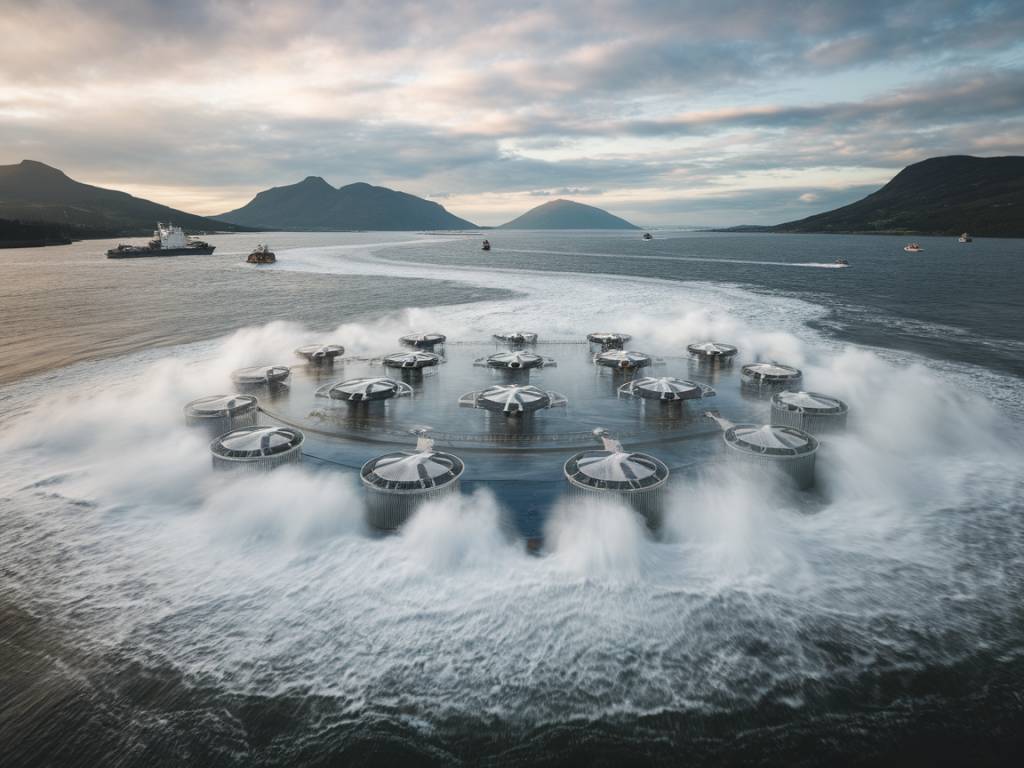The Revival of Tidal and Wave Energy: Riding the Crest of a Global Wave
When it comes to renewable energy, solar and wind often steal the limelight. But under the glittering surface of the seas lies an untapped powerhouse. Tidal and wave energy, once considered fringe concepts, are making a groundbreaking comeback on a global scale. Are we finally ready to harness the immense power of Earth’s oceans? Let’s dive in and explore this remarkable resurgence!
Why the Focus on Tidal and Wave Energy Now?
The oceans cover over 70% of our planet, yet their vast energy potential has remained largely underutilized. So why the sudden shift towards tidal and wave energy now? A perfect storm of factors is driving this newfound focus:
- Energy Demand: As global energy consumption soars, nations are urgently seeking sustainable and consistent energy sources.
- Climate Goals: The pressure to cut greenhouse gas emissions and meet ambitious climate targets has put ocean energy back on the radar.
- Technology Advances: Over the past decade, innovations in marine energy technologies have dramatically reduced costs, making tidal and wave energy more commercially viable.
- Predictability: Unlike wind and solar, tidal movements are highly predictable, offering a dependable source of clean energy.
It’s no wonder that projects across the globe are plunging into the depths of ocean energy potential.
Real-World Case Studies: Who’s Leading the Charge?
Countries with vast coastlines and strong marine currents are spearheading the revival of tidal and wave energy. Let’s take a closer look at three pioneering regions:
United Kingdom
Often hailed as the leader in tidal energy, the UK is home to some of the largest tidal energy projects in the world. The MeyGen tidal power project, located in the Pentland Firth, Scotland, is a standout example. With the capacity to eventually power nearly 175,000 homes, it’s a beacon of what’s possible with commitment and innovation.
Portugal
Known for its rugged coastline and powerful Atlantic waves, Portugal is no stranger to wave energy. The Aguçadoura Wave Farm was one of the world’s first operational wave energy projects. While the initial project faced hurdles, ongoing efforts are breathing new life into the initiative, including advancements in floating wave energy converters.
Australia
Down under, Australia is leveraging its abundant marine resources. The Perth Wave Energy Project, developed by Carnegie Clean Energy, is an excellent example of coupling wave energy with onshore microgrid systems to generate power and desalinate water simultaneously.
The Technologies Turning the Tide
Developing energy from the ocean is no small feat—it demands innovative engineering and robust technology capable of withstanding harsh marine environments. Here are some of the key technologies leading the charge:
- Tidal Turbines: Often referred to as « underwater wind turbines, » these devices harness the kinetic energy of tidal streams. Examples include the turbines used in the MeyGen project.
- Wave Energy Converters: These systems capture the motion of waves and convert it into electricity. Oscillating Water Columns (OWC) and Point Absorbers are common technologies in this space.
- Tidal Barrages: Large-dam-like structures that trap water at high tide and pass it through turbines during low tide, generating electricity.
Each of these technologies comes with its own set of advantages and challenges, but together they represent the multi-pronged potential of ocean energy.
Challenges to Overcome
As promising as tidal and wave energy may be, the journey isn’t all smooth sailing. Here are some of the hurdles the industry faces:
- High Initial Costs: Installing marine energy infrastructure is capital-intensive, particularly for first-generation projects.
- Environmental Concerns: Although far less impactful than fossil fuels, marine energy installations can still disrupt marine ecosystems.
- Grid Integration: Coastal areas often lack the infrastructure required for seamless integration of marine energy into national grids.
- Durability: Ocean energy devices must withstand constant exposure to saltwater, powerful tides, and storm surges—a tall engineering challenge.
Despite these obstacles, the potential rewards are too compelling to ignore. Governments, research institutions, and private companies are actively working to address these barriers.
How Tidal and Wave Energy Fits into a Renewable Future
Ocean energy won’t replace solar or wind, but it does have a unique role to play. By complementing these more widespread renewable energy sources, tidal and wave energy help balance the grid and ensure greater reliability. Moreover, their predictability positions them as a cornerstone for a mixed renewable energy portfolio.
For coastal and island communities, tidal and wave projects can unlock energy independence. Imagine a future where these remote areas no longer need to rely on fossil fuel imports, but instead produce clean energy right at their doorsteps. That’s the power of ocean energy.
A Sea of Opportunities
The revival of tidal and wave energy marks an exciting chapter in the global renewable energy narrative. From high-tech turbines harnessing tidal currents to innovative converters capturing wave motion, the possibilities seem almost limitless. While challenges remain, the progress made in recent years is nothing short of remarkable.
So, the next time you gaze out at the sea, remember this: beneath those waves lies a force capable of powering our future. And who knows? The surfboards of tomorrow might just ride waves fueling entire nations.
